Text

Smile! It's #TwoTruthsTuesday featuring species on #NationalMarineSanctuariesStamps!
Do you know which of these three statements isn't true about the balloonfish? Let us know in the comments!
1. The dazzling smile of a balloonfish hides a set of powerful teeth that can crush the shells of snails, urchins, and crabs.
2. Balloonfish are often encountered on night dives.
3. Balloonfish swell up like a balloon when trying to attract a mate.
Check out the balloonfish stamp:
#EarthIsBlue#WildSanctuaries#Underwater#Balloonfish#NOAA#FloridaKeys#nature#science#noaa#ocean#earthisblue#fish#conservation#diving
142 notes
·
View notes
Text

Behold the brilliant bloody-belly comb jelly! While you might think this scarlet sensation stands out in the deep sea, it actually blends in beautifully. Red is the first wavelength of light absorbed as you descend into the depths of the ocean, so crimson-colored animals appear black, making them virtually invisible in the darkness of the deep sea. It’s a super-stealthy way to avoid becoming somebody’s snack.
So next time you’re “seeing red,” think of how useful that would be when catching a meal in the deep.
2K notes
·
View notes
Text
if you're from europe and haven't done so yet, please please please sign the petition for unconditional basic income!
it needs 1 million signatures by the 25th june, as well as reach a certain threshold in at least seven countries which it only has in three, and it's also still missing so many signatures to reach 1 million and time is running out)
please just do it, it's free, it should be safe cause it's quite literally an official EU site, and literally all you need to do is put your name and address on there (not visible to the public, but they will check if the signatures are legit so please don't fake any signatures, that'll just make it look like the goal was reached when it wasn't)
please just do this, time is running out for this initiative. if there's any reason you haven't signed it yet and won't do it, tell me the reason, maybe i can debunk it
here's the link to the petition: https://eci.ec.europa.eu/014/public/#/screen/home
19K notes
·
View notes
Text
Happy Shrimp Week, Tumblr!!!
WE SHRIMPLY LOVE YOU—so much so that we made you these Shrimp Week Valnetine's day cards to share with *your* very shrimportant person!!
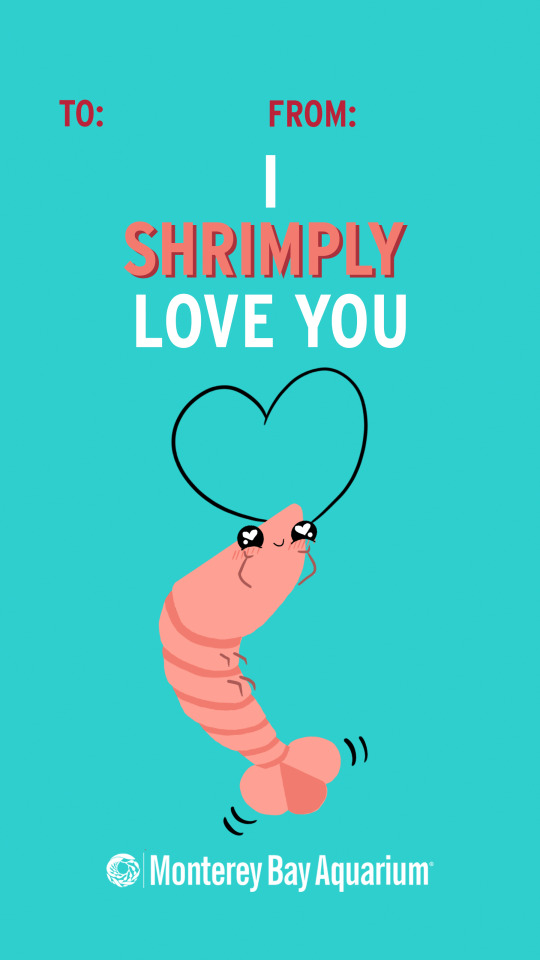
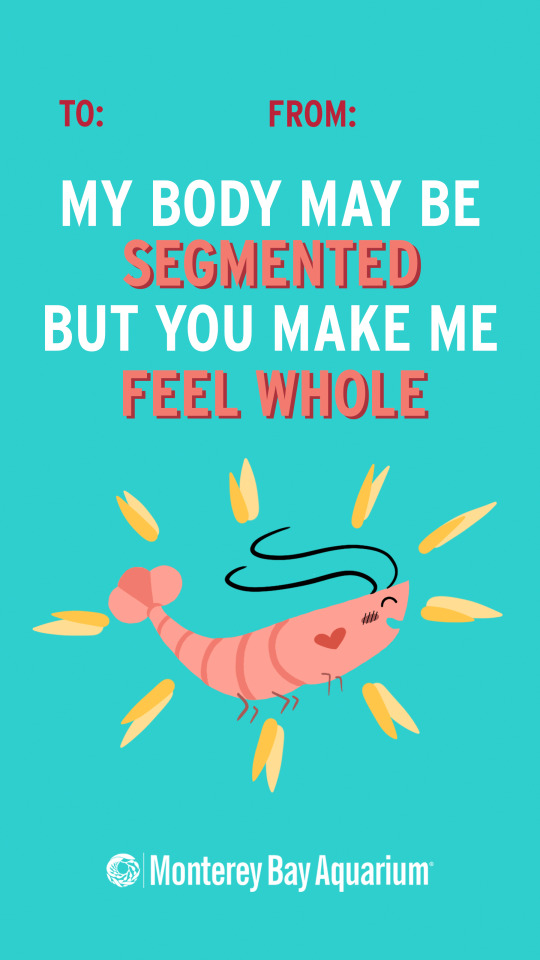
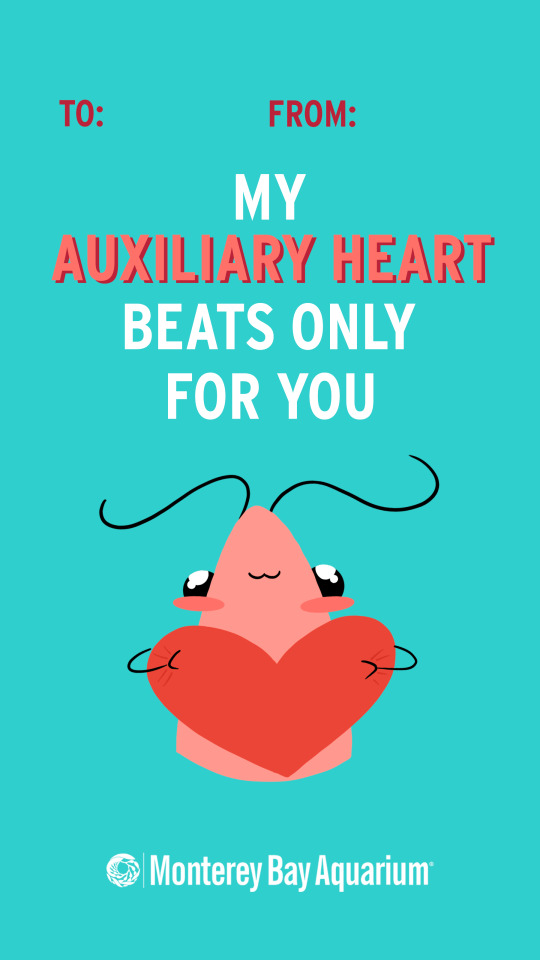


We also made some templates to add your own shrimp art to—can’t wait to sea what you come up with!



4K notes
·
View notes
Text

Purple-striped jellies or forbidden peppermints?
1K notes
·
View notes
Note
Is it true that lobsters never die of old age? How does that work?
Not exactly. As far as I am aware, the idea of lobsters being immortal is a myth that originated in memes at some point. They do get really old though and have an interesting aging concept.
Lobsters, unlike us, don't stop growing once they have reached adulthood and since they need to get a larger shell every time they grow, they shed their old one. This process is energy consuming and grows more energy consuming the longer the lobster lives. At some point, very old lobsters may die from the exhaustion of trying to shed their hard parts (I believe about a tenth goes out this way.) so they certainly do die of old age just like we do when at some point our body stops working.
Another thing a lot of older lobsters die from are shell diseases.
What Lobsters do have though (and what I assume is the reason people call them immortal) is the lack of senescence (deterioration of the body with age) so through their life their body does not weaken over time. There are multiple theories why that is the case but the one I think is most likely is that they are able to endlessly repair their DNA and produce Telomerase in their cells so the cells don't die/age in a sense like ours do.
So no, Lobsters are not immortal but there are species who can reach biological immortality such as the Immortal Jellyfish (Turritopsis dohrnii). If you want to know more about that funky cnidarian let me know!
57 notes
·
View notes
Note
i think my cat is gay
Good for your cat anon, good for your cat
0 notes
Note
Why do sharks go catatonic when you flip them upside down?
This is called tonic immobility and several other species also display this behavior like some snakes for example.
For sharks I don't think we know why that happens yet for certain. There are theories that it could be a defense mechanism to "play dead" but it is also displayed by several species who are apex predators so that would not make sense.
I tried to find some research about it but it really looks like this is still one of the ocean's mysteries. Maybe someone else on here has a source?
(It is however very useful to capture/examine sharks like this so your don't risk injuring them as they do not struggle.)
48 notes
·
View notes
Note
Is it true that lobsters never die of old age? How does that work?
Not exactly. As far as I am aware, the idea of lobsters being immortal is a myth that originated in memes at some point. They do get really old though and have an interesting aging concept.
Lobsters, unlike us, don't stop growing once they have reached adulthood and since they need to get a larger shell every time they grow, they shed their old one. This process is energy consuming and grows more energy consuming the longer the lobster lives. At some point, very old lobsters may die from the exhaustion of trying to shed their hard parts (I believe about a tenth goes out this way.) so they certainly do die of old age just like we do when at some point our body stops working.
Another thing a lot of older lobsters die from are shell diseases.
What Lobsters do have though (and what I assume is the reason people call them immortal) is the lack of senescence (deterioration of the body with age) so through their life their body does not weaken over time. There are multiple theories why that is the case but the one I think is most likely is that they are able to endlessly repair their DNA and produce Telomerase in their cells so the cells don't die/age in a sense like ours do.
So no, Lobsters are not immortal but there are species who can reach biological immortality such as the Immortal Jellyfish (Turritopsis dohrnii). If you want to know more about that funky cnidarian let me know!
57 notes
·
View notes
Text
Asks!
Do you have a question in the field of nature sciences or diving that you’d like to have answered?
Simply go to my Asks and I will see what I can do!
6 notes
·
View notes
Text
Botanic Gardens
I love Botanic Gardens, here is why:
1: they are beautiful, both the plants and Architecture
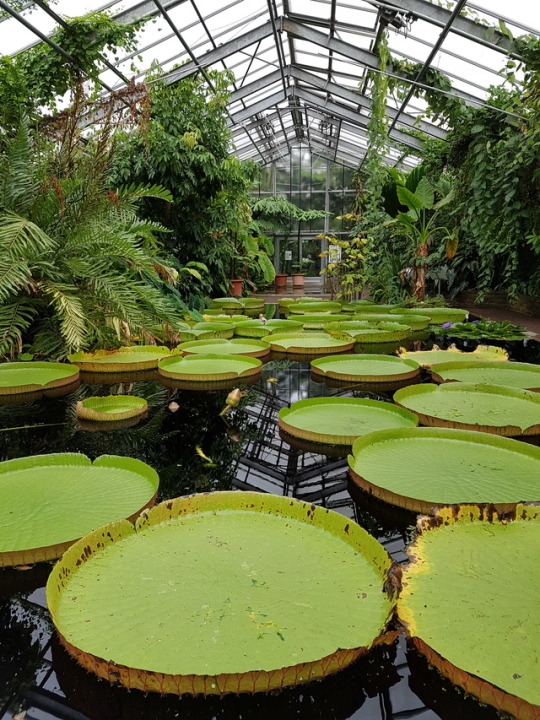
Botanic Garden Bonn, Germany


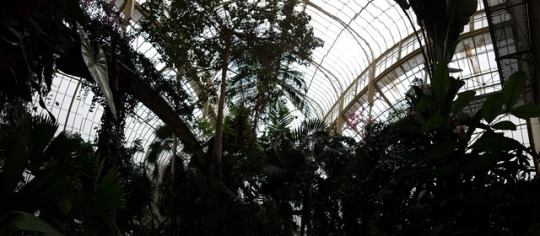
National Botanic Gardens Dublin, Ireland
2. They are educational. You learn something even if you just take a walk.

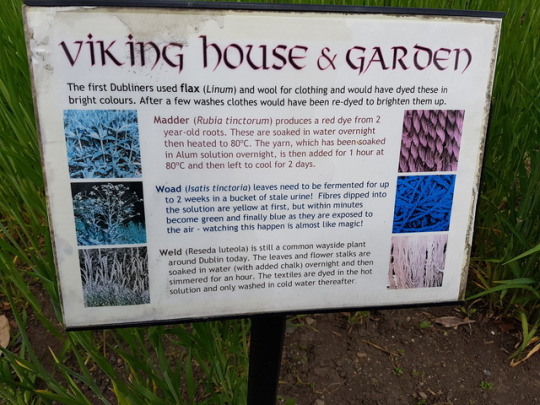
Recreated Viking House, Dublin
3. They are great for city-kids to learn the beauty of nature. Kids love colourful things. A visit in a botanic garden gives them the opportunity to run around and explore. Many gardes offer exploring guides just for kids.
5. They preserve plants that would otherwise be extinct. Most bigger gardes have research facilities and seed-banks where they freeze seeds of endangered species.
4. It’s a nice and calm place to think. If you need time on your own, the botanic gardens are always quiet and calm, and you can enjoy the silence while looking at beautiful flowers.
What I want to say is: go to your local botanic garden, enjoy the scenery. If you are a poet or writer use it as inspiration. Protect them, they are an island of serenity inside the chaotic hearts of large cities.
6. They provide a small living space for animals within a big city.

7. The admission is mostly free (or very low).
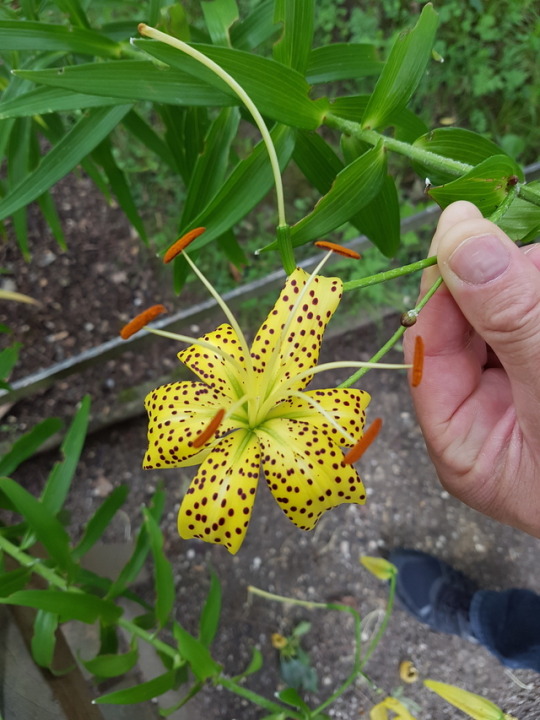


30 notes
·
View notes
Text

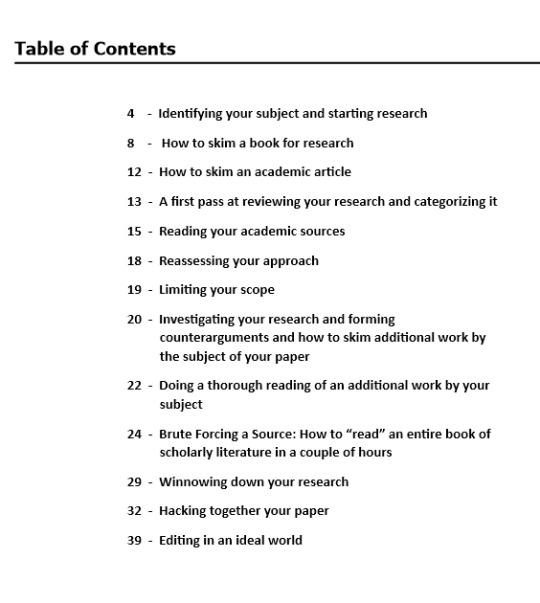
Do you want a guide to writing a research paper but you don't want to scroll a mile on your dash? This post is for you, buddy.
This book (book????) or tidily-laid-out-shitpost or whatever you want to call it is a handy-dandy guide to college-level humanities research methods and paper-writing.
This is a step-by-step follow along of my process as I, a person with a BA in English Lit, navigate writing a paper on George Orwell for my English 101 class.
This is NOT carefully crafted, it is literally a post that I made.
That said, it is a post that I made that is twelve thousand words on how to write a paper and now comes with a table of contents and headers and fancy alt-text and image descriptions and is forty fucking pages.
This document includes:
How to read an academic paper
How to skim a book for a college class
How to prioritize what sources to use
How to write an organized, cohesive research paper with an introduction, support paragraphs, and conclusion
(i managed to only say "fuck" six times in forty pages so I'm not taking them out.)
ANYWAY for a PDF click here.
If you want it in .docx click here.
Free to use for any reason, free to reproduce, give them to whoever, just don't sell them. (if you want to credit me if you do share them, ms-demeanor.tumblr.com is perfectly fine)
Happy finals season, babes. Good luck with those papers.
6K notes
·
View notes
Text
🚨ATTN CALIFORNIANS! 🚨Our legislators are voting on several bills that will require industry to be more honest and help consumers make informed choices about plastic packaging. You can urge our leaders to help curb California’s plastic problem with this handy-dandy form!
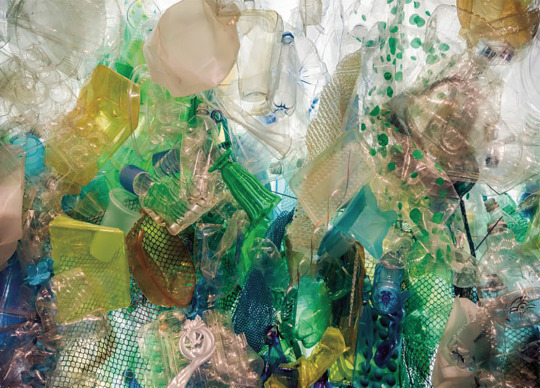
883 notes
·
View notes
Text
Re: the last post, the article mentions that some places use clams to test the toxicity of the water. It’s like that in Warsaw- we get our water from the river, and the main water pump has 8 clams that have triggers attached to their shells. If the water gets too toxic, they close, and the triggers shut off the city water supply automatically.
The clams are just better at measuring the water quality than any man-made sensors.

Edit: check out this documentary trailer : https://vimeo.com/408820791
217K notes
·
View notes
Video
Go behind the scenes with our scientists and ROV pilots on June 30!
We’ll be streaming #LivefromtheDeep on an MBARI expedition to Sur Ridge—an underwater oasis of deep-sea corals and sponge gardens just off the coast of northern California, near Big Sur. MBARI’s remotely operated vehicles and state-of-the-art cameras let our scientists see the amazing creatures that call Sur Ridge home, and high-resolution mapping tools create stunning images of the seafloor.
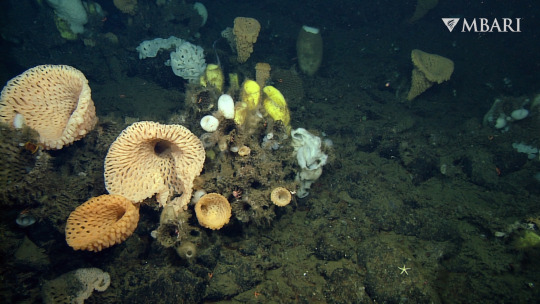
Join us on June 30 at 11:00 a.m. (Pacific) and see live footage of the seafloor, ask our scientists and engineers your questions, and find out what it’s like to have a career exploring the deep ocean. Tune in to the livestream on MBARI’s website, YouTube, Facebook, or Twitter.
youtube
349 notes
·
View notes
Text
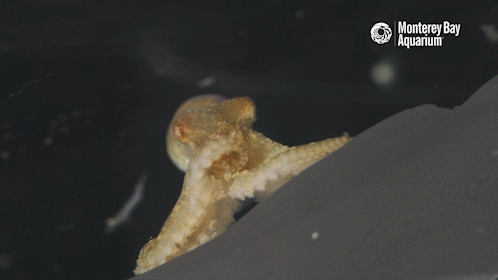


Just a bb two-spot octopus cutethulhu to bless your timeline for Cephalopod Week
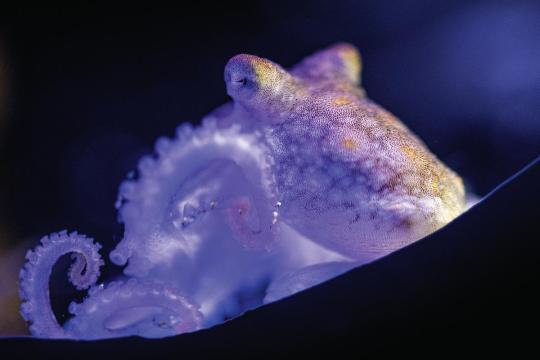
2K notes
·
View notes
Text
Flippers, not fingers: Sea turtles’ surprising feeding strategies
Imagine you’re trying to eat a snack—a tasty sustainable fish taco, let’s say. But there’s no plate, no cutlery, and you can’t use your hands. Also, gravity is muted, so the taco has a frustrating tendency to float away between bites.
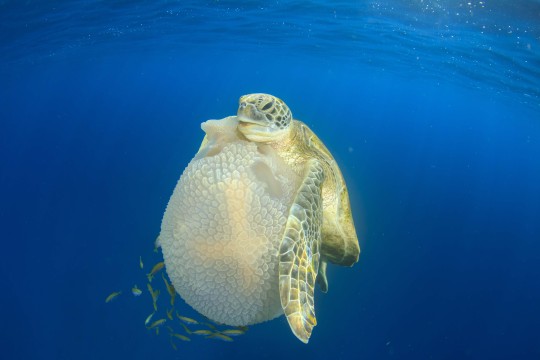
Sea turtles use their flippers in a multitude of ways to help them capture prey, like this green sea turtle in the Gulf of Thailand that’s grasping a jelly before it eats. Photo ©Rich Carey/Shutterstock.com
If this sounds difficult, you’re beginning to understand the challenge of being a hungry sea turtle, stuck with awkward flippers more useful for moving around than for grasping prey.
Still, sea turtles make do with what they have. And, as it turns out, they can (and do) use their forelimbs to corral, swipe and hold food.
Their behavior is the subject of a new publication by Monterey Bay Aquarium researchers Jessica Fujii and Dr. Kyle Van Houtan. It’s something that’s been noted in passing in scientific literature, but Jessica and Kyle say it’s a fascinating glimpse into the evolution of ocean creatures.
To illustrate, Jessica points to a photo of a green sea turtle taken in open water in the Gulf of Thailand. Between its flippers, it’s holding a tasty meal: not a fish taco, but a spherical jellyfish nearly the size of the turtle itself.
Getting a grip on a meal
“In the open ocean environment, there isn’t much to help this sea turtle keep its food in place,” Jessica explains. “So in the picture, he’s using his flippers to keep the meal from drifting away while grabbing pieces with his mouth.”
Hawksbill and loggerhead sea turtles have also been spotted using their flippers to forage. In another image, a loggerhead seems to roll a scallop against the seafloor.

A loggerhead sea turtle leverages a scallop against the seafloor to open its shells before eating the meat inside. Photo courtesy Coonamessett Farm Foundation
“It has to get the two halves of the shell open to get inside,” Jessica says. “It’s using its flipper to push down the shell part, and with its mouth it’s pulling out the meat.”
Jessica is part of the Aquarium’s sea otter research team where she has explored topics in ecomorphology—the nexus of evolution, behavior and body form. She previously co-authored a paper investigating the origins of tool use by sea otters, which use their paws when foraging.
“Sea turtles’ limbs have evolved mostly for locomotion, not for manipulating prey,” she says. “But that they’re doing it anyway suggests that, even if it’s not the most efficient or effective way, it’s better than not using them at all.”
Hardwired evolutionary behavior
Similar behaviors have been documented in marine mammals from walruses to seals to manatees. But sea turtles are far more ancient, appearing in the fossil record around 100 million years earlier.
Kyle, who directs the Aquarium’s science program, says seeing this behavior in turtles was a surprise—one that raises questions about which traits are learned and which are hardwired.

Researchers were surprised to find sea turtles using their flippers in sophisticated ways while feeding — like this one holding onto its prey.
“With a highly intelligent, adaptive social animal, we expect these things to happen,” he says. Otters, for example, have social structures packed with opportunities to watch and learn the subtleties of dexterous foraging.
“With sea turtles, it’s different; they never meet their parents,” Kyle says. “They’re never trained to forage by their mom. It’s amazing that they’re figuring out how to do this without any training, and with flippers that aren’t well adapted for these tasks.”
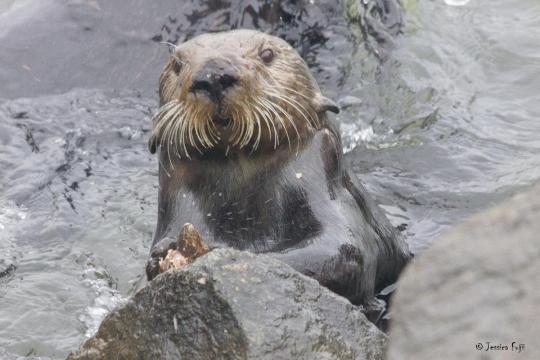
Sea otters use their dexterous paws when foraging, but them must learn the behavior from their mothers. Photo © Jessica Fjuii/Monterey Bay Aquarium
How developmental biology predisposes animals to adopt dining strategies is of particular interest, given the Aquarium’s efforts to raise stranded sea otter pups and prepare them for a return to the wild. Before they’re released, ecologically naïve pups have to be taught foraging behaviors, be it for crabs or abalone, by adult female sea otters at the Aquarium.
“What we’re trying to understand is how to have the best sea otter surrogacy program,” Kyle says. “Sea otters and sea turtles are in some respects at opposite ends of the spectrum. However, learning about one, can help us with the other.”
Hiding in plain sight
For Kyle, inspiration for the flipper study came in 2016 when he was a sober driver for a coral reef conference after-party. While ferrying colleagues back to their hotels in Waikiki, one of his passengers learned of Kyle’s recent paper on hawksbill sea turtles. The passenger mentioned a field research project of his own which involved his team placing sea anemones on a reef in Tahiti. Day after day, the anemones kept disappearing, until the team set out a camera and identified the culprit: a hawksbill turtle.

Foraging sea turtles use their flippers in a variety of ways, In Moorea, this hawksbill turtle braces itself against the coral to feast on a sea anemone.
Based on that chance encounter, Kyle watched the video—and noticed something striking.
“What jumped out at me was as soon as this hawksbill turtle bit an anemone, it put both its flippers on the reef and pushed to get leverage and rip it loose.”
That’s a behavioral trait associated with more evolved groups like mammals, he says—not turtles.
“When you see sea turtles foraging, they eat with their mouths,” Kyle explains. “You see critter-cam footage of a leatherback finding a jelly in its line of sight, swimming toward it, biting it and moving on. A green turtle close to the seafloor, seeing a plant rooted on the bottom—you see them lunging and biting it and moving on. Or a hawksbill that puts its head down in cavities in coral reefs gathering sponges—they’re always using their beak.”
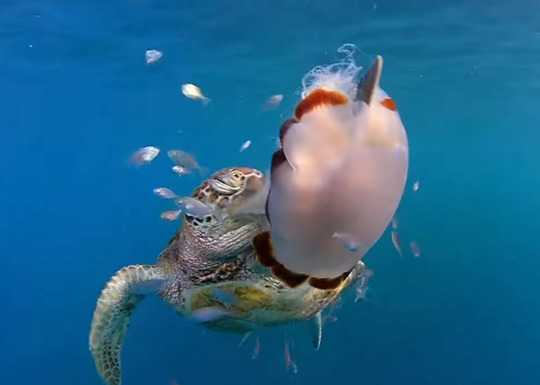
Crowd-sourced photos and videos helped the researchers document the surprising extent to which sea turtles use their flippers when they forage.
Kyle was intrigued. Investigating the phenomenon at scale could’ve been an epic undertaking—hundreds of hours of work, he says—but he and Jessica realized they could effectively crowd-source the footage they were looking for.
“I started Googling and was surprised how many people have captured this behavior,” Jessica says. Thanks to the advent of ubiquitous cameras and massive digital archives like YouTube, a trove of documentation was already available online. “A good number of these videos are just taken by the general public on vacation.”
“I was surprised that even though there are videos showing these behaviors, the topic hadn’t been explored before in this depth,” she says. Then again, the ocean is full of surprises: “I think there’s still a lot we haven’t seen.”
—Daniel Potter
Fujii, J, McLeish, D, Brooks, A, Gaskell, J, Van Houtan, K. (2018) Limb-use by foraging marine turtles, an evolutionary perspective.
2K notes
·
View notes